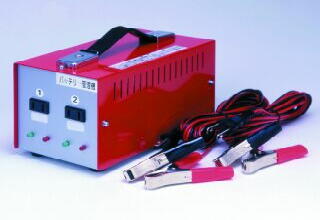(1) Biodegradable Flocculants - PG (Cross-linked Polyglutamic Acid, powder)
This polymer (PG) is first derived from a natural substance - "Polyglutamic acid" as shown below and becomes as a super flocculant lant when calcium and some natural inorganic minerals (harmless) are added.
The polymer is purified through a unique process, which increases the number of cross-links tremendously. It is eco-friendly, biodegradable, and promises amazing results even when used on its own, therefore can be used to purify a wide range of water qualities.

Appearance: A gray-white powder
Applications: Treatment of tap water, sewage, industrial waste water, polluted rivers, lakes, ports, polluted wells with arsenic (As) and dioxin.
Features: Easy to use with the wide range of water in the concentrations, pH and temperatures. Water treatment can be carried out in a short period of time as the flocculation begins and settles out very quickly.
Because the flocculants contain some hydrophobic substance, it must be stirred sufficiently. Also, as it contains some inorganic minerals, a part of the flocculants may remain in the water. To remove the flocculants and precipitates, if necessary, please use a filter.
(2) Chlorine Dioxide Tablets
The chlorine dioxide tablet generates chlorine dioxide (ClO2) in water. ClO2 acts strongly as a disinfectant or as an oxidant and as a deodorant in the treatment of drinking water. It may be used in both the pre-oxidation and the post-oxidation stages of the treatment as a disinfectant.
By adding chlorine dioxide in the pre-oxidation phase of the purification of surface water, the growth of bacteria and algae can be controlled in the subsequent phases of the treatment. Chlorine dioxide also acts as an oxidant to the colloidal substances, aiding in the coagulation process and improving the removal of turbidity.
For the disinfection stage, chlorine dioxide effectively acts as a strong bactericide and virucide, on a wide spectrum - including the examples in
Table 1, sars, HBs and bird influenza viruses.
Table 1: Effect of ClO2 as a disinfectant (Examples)
|
Bacillus
|
Extinction density expressed as ppm
|
|
2 min & 30 sec. later
|
15 min later
|
|
E. coli (O-157)
|
0.25
|
-
|
|
Staphylococcus aureus
|
1
|
-
|
|
Salmonella enteritidis
|
2
|
0.1
|
A summary of the effect of ClO2 on various drinking water components is shown in Table 2
Table 2: Effect of ClO2 in the treatment of drinking water
|
Constituent
|
Reaction
|
| Selected natural and synthetic organics |
Can react to form chlorite [*1] |
| Iron and manganese |
Oxidized [*2] |
| Color |
Removed [*2] |
| THMFP |
Lowered [*2] |
| Organics |
Oxidized [*2&*3] |
| Phenols |
Reacts to form chlorinated phenols and quinines [*4] |
Literature
[*1] Water Quality and Treatment, 4th ed., AWWA, McGraw -Hill, New York, 1990
[*2] Stevens, A.A., Reactions products of chlorine dioxide,EHP,46,1982,101-110
[*3] Richardson, S.D.; Thruston Jr., A.D.; Collette, T.W.; Schenck-Patterson, K.; Lykins Jr., B.W.; Majetich, G.; Zhang, Y., Multispectral Identification of ClO2 Disinfection Byproducts in Drinking Water, Environ. Sci. Technol., 28, 1994, 592-599
[*4] Ben Amor, H.; De Laat, J.; Dore, M., Mode of action of chlorine dioxide on organic compounds in aqueous medium, Water Res., 18(12), 1984, 1545
Examples of the dilution in water for one (1) tablet of Chlorine Dioxide Tablet are shown in Table 3.
Table 3: Dilution vs. ppm
|
Water
|
ClO2 Concentration
|
Water
|
ClO2 Concentration
|
|
1 liter
|
24 ppm
|
5 liters
|
4 ppm
|
|
2 liters
|
12 ppm
|
10 liters
|
2.4 ppm
|
It is reported that 0.5 - 2.4ppm of ClO2 may be good enough for the sterilization of drinking water depending on the dirt levels. If you use the polyethylene bag (ca. 1500ml), you are requested to cut the tablet for a use amount so that a 0.5 - 2.4ppm dilution can be obtained.

This pack contains 2 tablets in a vial.
Public recognition to the safety of chlorine dioxide
| Organization |
Content of Recognization
|
| JECFA (United Nations) |
ADI (human body intake allowance standard) A1 class recognition |
| FDA (U.S.A.) |
Disinfection for medical equipment, Food additive and medical treatment |
| EPA (U.S.A.) |
For drinking water, industrial effluent processing and environmental clean-up. |
| NASA (U.S.A.) |
Complete sterilization for the space shuttle and the space foods. |
| EU (Europe) |
Food additive for drinking water and for medical treatment. |
| MHLW・MITI (Japan) |
Disinfection for public bath water and swimming pool, For drinking water, Oxidation of wheat powder etc. |
Importance: When using the polyethelene bag (ca.1500ml) included in this pack, please pit the two reagents together in the bag.
|